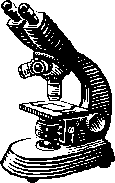Bioterrorism Forensic
 Capabilities
Capabilities
General Information on Bioterrorist Agents
- There are a number of bacteria, viruses, and fungi that pose a serious health concern to humans, threaten the U.S. agriculture economy and food supplies and the environment.
- The use of these pathogenic agents as a biological weapon have been demonstrated.
- The post 9/11 anthrax letters is a prime example of a bioterrorist attack
- This event demonstrated how easily a bioterrorist attack can overwhelm the public health system
- It costs about $1 million to kill one person with a nuclear weapon, about $1,000 to kill one person with a chemical weapon and about $1 to kill one person with a biological weapon
- Because of the low cost and minimal infrastructure needed to carry out bioattacks, future attacks cannot be ruled out.
To learn more about possible bioagents go to the Center for Disease Control and Prevention
What if there is a bioterrorist attack?
A database would allow public health advisors to rule out any possibilities of bioengineered agents. The national database would provide detailed analyses overnight, which is necessary in order to implement an optimal emergency response plan.
This database can be created through what is called microbial forensics.
What is Microbial Forensics?
This approach is similar to a human's unique genetic features, which makes it possible for DNA to be used as molecular fingerprints and evidence. However, the ultimate value of such information depends on the ability to compare an individual DNA sample against many others. The same powerful approach also applies to bioagent forensics.
- Improving the means to prevent, deter, & react to bioattacks
- Strengthening criminal investigations and prosecution efforts for the law enforcement community
- Helping to ensure the safety and readiness of troops stationed throughout the world
- Helping develop new vaccines and drugs
- Effecting legally and politically defensible capabilities to collect, analyze, interpret, and preserve evidence against illicit biological programs and events
- Providing rapid and complete information on bioattacks and thereby saving lives by expediting effective remedies and therapies

